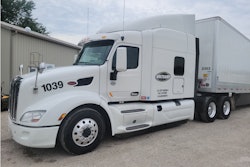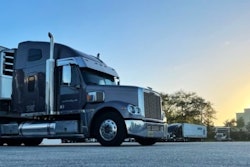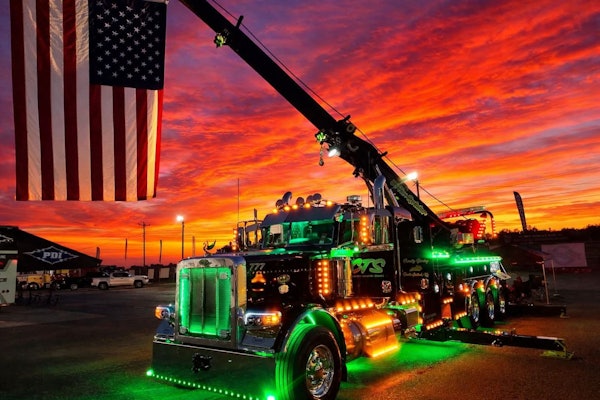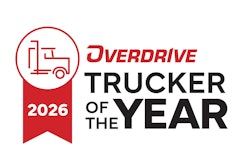
Since starting in the mid-1980s as a small fueling operation in Southern California, Chula Vista-based Lamb Fuels has diversified through the years and grown to what is now a 23-truck tanker fleet that hauls aviation fuel and retail gasoline, in addition to a fuel-recovery business unit.
The company was founded by Virginia Lamb, who started primarily as a small fueling operation with a diesel tank, and she sold diesel fuel. Her son, Greg Lamb, took over the business in 2004 and has been growing it since.
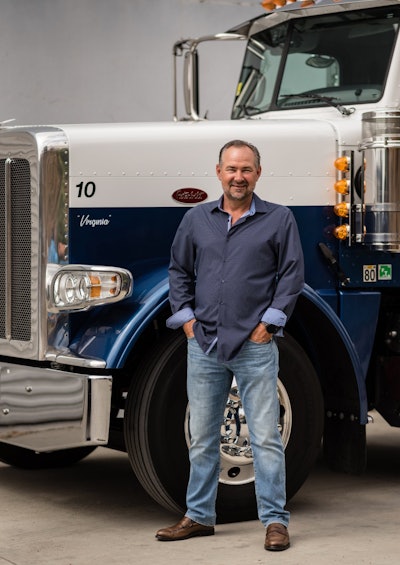 Lamb Fuels owner Greg Lamb took over the business from his mother, Virginia Lamb, in 2004. He still oversees the business today.
Lamb Fuels owner Greg Lamb took over the business from his mother, Virginia Lamb, in 2004. He still oversees the business today.
In the last couple years, the company really began looking at new ways to diversify the business. “You can’t have all your eggs in one basket,” Lisowski said.
Lamb has since started hauling aviation fuel for military bases in Southern California, and also added what Lisowski called “the rack side of the fleet for retail gas station deliveries” in the fall of 2021, “and that’s really been taking off.”

Underscoring the fleet's longevity and recent growth, Lamb Fuels is one of five fleets contending for Overdrive's 11-30-truck Small Fleet Champ award.
Lisowski has been working with petroleum tankers since he got out of the U.S. Marine Corps in 2000, first driving trucks that pulled them, then eventually managing fleets of them. He came to Lamb in 2012 to work on the safety and compliance side, handling DOT paperwork, driver qualifications, onboarding and more in the back office. He then moved into fleet management and became the general manager about two and a half years ago.
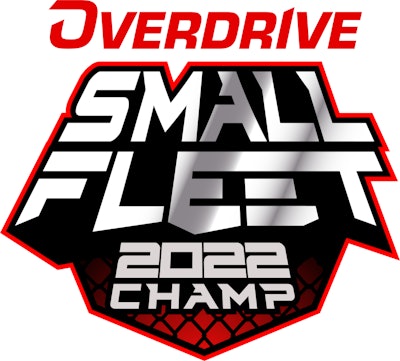 This is one of 10 Small Fleet Champ semi-finalist profiles that will run throughout the next month. (Access all of the published profiles via this link.) Two finalists in each category (3-10 trucks, 11-30 trucks) will be announced in October.
This is one of 10 Small Fleet Champ semi-finalist profiles that will run throughout the next month. (Access all of the published profiles via this link.) Two finalists in each category (3-10 trucks, 11-30 trucks) will be announced in October.
“A lot of carriers were laying drivers off, but we were kind of trying to diversify at that time,” Lisowski said. “It was an advantage to start a small fleet in San Diego for the retail [gas] side. Where other carriers didn’t have truck time to do loads, we did because it was a new upstart. That helped out a lot.”
More diversification came through a broker, hauling aviation fuel in a dedicated lane for the military, with bases as the destination. Just recently, the company also inked a contract running aviation fuel to Van Nuys Airport -- three loads a day, seven days a week.
Even with the considerable growth in recent years, Lisowski still sees plenty of room for future expansion, particularly with different fuel alternatives becoming more common out West. “As renewable diesel comes on more in California, there are definitely opportunities we’re going to be working on," he said.
[Related: Owners need to engage on zero-emissions targets out West]
On the retail gas side, too, given its relative infancy as part of the decades-old business, Lisowski said there’s still “tons of room for growth there. We have the equipment and we have the drivers, just not enough work, per se. So we’re definitely trying to grow that side” of the business. Lisowski noted that starting up the retail gas-hauling side of the business last fall has been good for the company, but also challenging “because San Diego is kind of a tight market,” he said. “It’s a small city. There’s already a pretty decent amount of liquid carriers for petroleum that have been there and established.”
To differentiate Lamb Fuels from those other carriers, “you’ve got to be able to provide something maybe a little bit better than the other carriers,” he added -- that's something the company does well, according to one customer from another business unit.
“They are a great partner,” said Donna Randall, supply chain analyst for ZFS Solutions, a company that Lamb hauls ethanol for. “We started doing business with Lamb in Q4 of 2021. They currently handle 4-7 loads a day for us. We give them load numbers at the beginning of each month, and they take care of the rest. I do not have to worry if the loads are going to move because they make it happen. If we do have to cancel or add loads on any given day, they are quick to adapt.”
Randall said Lamb’s integrity is one area that has really made the company stand out.
“When our partnership began, I had a typo in the rate,” she said. “It would have affected ZFS negatively, and they could have held us to the rate. However, after talking it over with them, they understood the mistake and wiped the slate clean.” That kind of integrity went "a long way" in the early days of their partnership.
Because some of the company’s work involves hauling hazardous materials onto military bases, drivers have to not only hold a hazmat endorsement, but they also have to be able to clear a government background check to be able to get on the bases.
[Related: High-security munitions hauling: Bigger investment at start-up can yield rich rewards]
“Outside of the hazmat endorsement, if there’s any kind of blip on your radar, even 25 years ago in your background check, you won’t be able to get on base,” Lisowski said. He added that most drivers that come his way with hazmat endorsements "are usually pretty good" as far as their background checks and ability to get on military bases.
Lamb Fuels pulls with a mix of Freightliner and Peterbilt tractors, mostly daycabs with a couple of sleepers, with Detroit-powered Freightliner Cascadias and Cummins-powered Peterbilt 389s and 579s. In the cab, the company runs Netradyne dashcams and J.J. Keller ELDs. All of the trucks are spec’d with Michelin tires, and most of them are equipped with disc brakes.
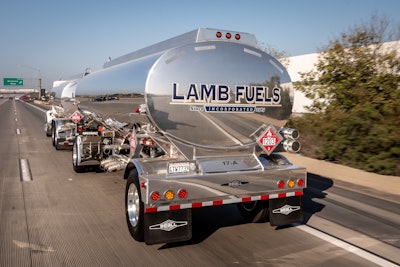 In addition to the stylish Peterbilts used in parts of the business, Lamb Fuels pulls Beall tankers, sometimes in doubles configurations like the one shown here. General Manager Jeff Lisowski praises Beall for both quality and customer service.
In addition to the stylish Peterbilts used in parts of the business, Lamb Fuels pulls Beall tankers, sometimes in doubles configurations like the one shown here. General Manager Jeff Lisowski praises Beall for both quality and customer service.
"Really just about any customization you can think up, they'll try their best to accommodate," Lisowski added. "Beall's fit and finish is top notch."
On the aviation fuel side of the business, the tankers are single-compartment, 9,200-gallon tanks, which Lisowski said makes it easier to load and unload due to testing requirements with aviation fuel. “If you bring a four-compartment trailer, especially with the military, after they load each compartment, they have to test and sample each compartment, so that takes time.”
The retail gas business unit runs four-compartment tankers.
For maintenance, Lamb uses third-party shops to maintain their trucks and tankers, tractors mostly at the OEM dealerships. On the tanker side, there aren’t any OEM tank shops in their area, but there is an independent shop near the company’s yard that does a lot of their tanker work.
In pursuit of real commitment to drivers, paid for all time
All of the company’s 23 drivers are company drivers and are paid hourly, starting around $33 an hour. Drivers who come in with at least a year of petroleum-hauling experience start between $34 and $35 an hour.
Lamb has instituted a guaranteed hours program on the retail gas side to cover drivers for a full week's work, even if the work isn't there, given early days for the business unit.
“If a guy winds up getting a short week, a couple slow nights, and only ends up with 34 hours, he knows he’s going to get that guaranteed 40 hours a week" in pay, Lisowski said.
Lamb also pays 100% of its employees’ medical, dental and vision, along with a group life plan up to $50,000. If an employee needs to add a spouse or other dependents to their insurance, the employee has to pay those premiums.
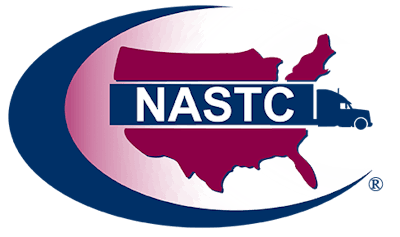 The National Association of Small Trucking Companies is sponsoring this year's Small Fleet Championship program. Finalists receive a year's worth of membership in the association, with access to a myriad of benefits from NASTC's well-known fuel program to drug and alcohol testing services and much more. All will be recognized at the association's annual conference, where the winner will be announced in October. Find more about the association via their website.
The National Association of Small Trucking Companies is sponsoring this year's Small Fleet Championship program. Finalists receive a year's worth of membership in the association, with access to a myriad of benefits from NASTC's well-known fuel program to drug and alcohol testing services and much more. All will be recognized at the association's annual conference, where the winner will be announced in October. Find more about the association via their website.
Since Lisowski arrived at the company in 2012, safety-culture improvement has been a goal. Part of that is offering bonuses to drivers for clean Level 1 and Level 2 inspections -- $100 for a clean Level 1 and $75 for a clean Level 2.
Lisowski said the entire company has played a part over the years in improving the fleet’s CSA scores, which he said when he started at the company “were not good,” with much of their business conducted in high-inspection-intensity California. The company’s hazmat-category score, for example, was about as high as a fleet could get, at 96 (out of 100) when he started. “Out of seven BASIC categories, I think we had a score in, like, five of them back in 2012,” he noted.
Over the next 23 months, he said the company went “all out” to get the scores down. By the end of it, Lamb's hazmat score fell from 96 to zero. Today, the company has a 4.9% out-of-service rate in the Vehicle Maintenance category (well below the 21.6% national average), and a 1.6% hazmat OOS rate (compared to a 4.46% national average, according to FMCSA's SAFER website).
[Related: CAP Trucking refocuses on asset business, success in North-South LTL reefer lanes]

